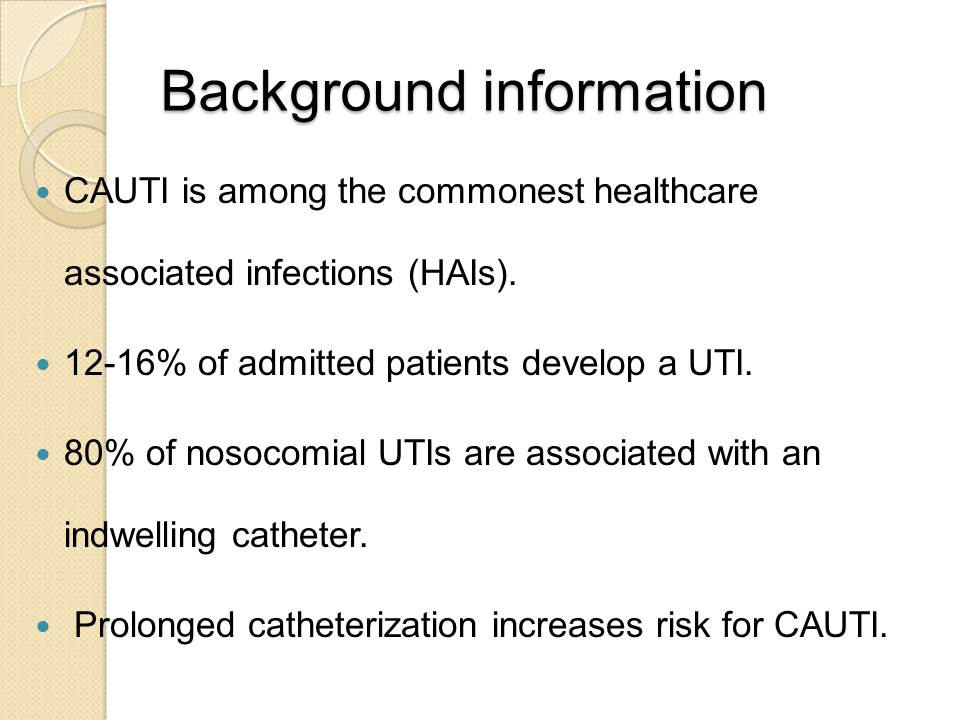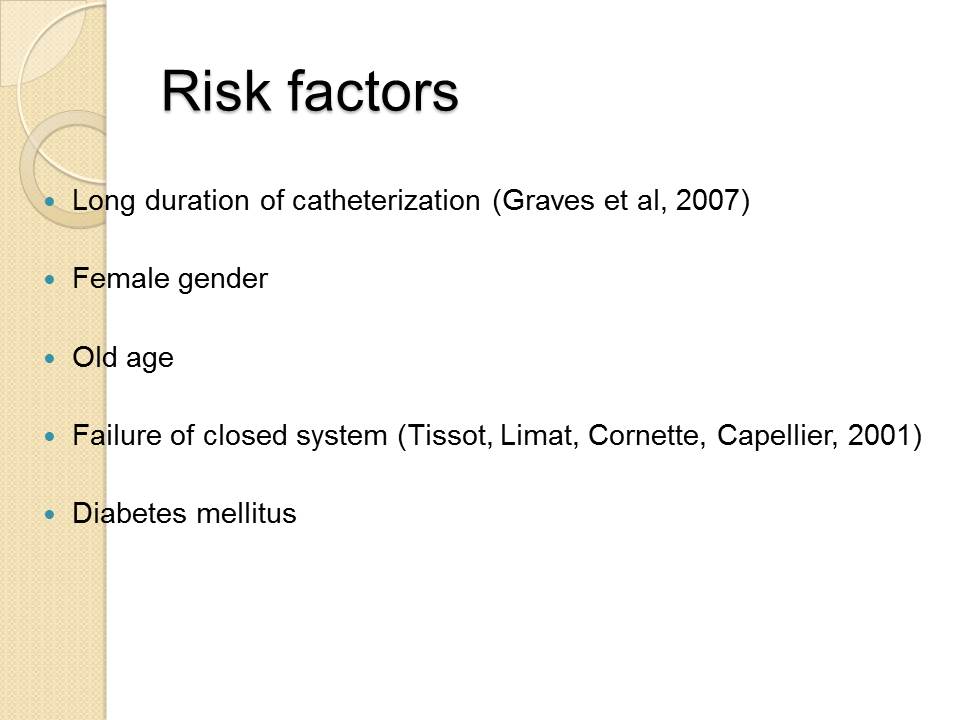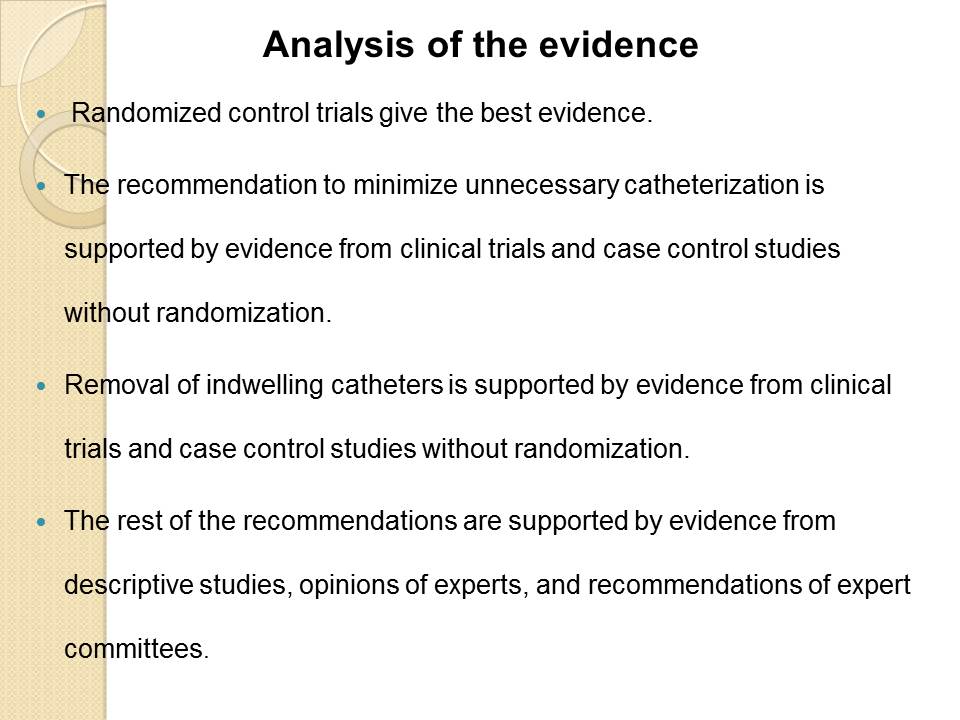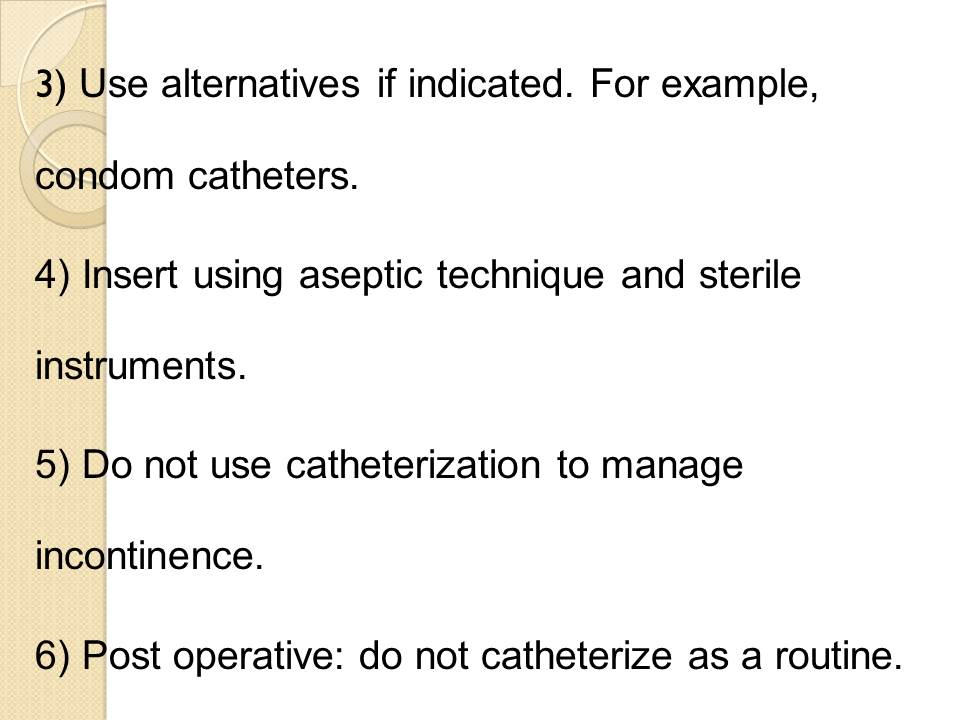Background information
- CAUTI is among the commonest healthcare associated infections (HAIs).
- 12-16% of admitted patients develop a UTI.
- 80% of nosocomial UTIs are associated with an indwelling catheter.
- Prolonged catheterization increases risk for CAUTI.

Risk factors
- Long duration of catheterization (Graves et al, 2007);
- Female gender;
- Old age;
- Failure of closed system (Tissot, Limat, Cornette, Capellier, 2001);
- Diabetes mellitus.

Analysis of the evidence
- Randomized control trials give the best evidence.
- The recommendation to minimize unnecessary catheterization is supported by evidence from clinical trials and case control studies without randomization.
- Removal of indwelling catheters is supported by evidence from clinical trials and case control studies without randomization.
- The rest of the recommendations are supported by evidence from descriptive studies, opinions of experts, and recommendations of expert committees.

Recommendations
Minimize unnecessary catheterizations (IDSA, 2009):
- catheterize only when indicated.
- Facilities should develop lists of indications.
- Facilities should educate staff on the indications.
- Physicians should give orders before patients are catheterized.
Removal of indwelling catheters (CDC, 2009):
- remove when they are no longer needed; reduces risk of CAUTI.
- implement stop-order measures;- to discourage inappropriate use.
Use alternatives if indicated. For example, condom catheters.
Insert using aseptic technique and sterile instruments.
Do not use catheterization to manage incontinence.
Post operative: do not catheterize as a routine.


Conclusion
- None of the recommendations is supported by evidence from randomized control studies.
- For this reason, recommendations for their application in practice are given moderately strong rating.
- Further research (randomized control studies) should be done to generate strong recommendations.

References
Centers for Disease Control and Prevention. (2009). Healthcare Infection Control Practices Advisory Committee:2009 guideline for Prevention of CAUTIs. www.cdc.gov.
Graves et al. (2007). Factors associated with health care-acquired urinary tract infection. Am J Infect Control, 35(6), 387-92.
Infectious Diseases Society of America. (2009).Diagnosis, prevention, and treatment of catheter-associated urinary tract infection in adults: 2009 international clinical practice guidelines from the Infectious Diseases Society of America.
Tissot, E., Limat, S., Cornette, C., Capellier, G. (2001). Risk factors for catheter-associated bacteriuria in a medical intensive care unit. Eur J ClinMicrobiol Infect Dis, 20(4), 260-2.